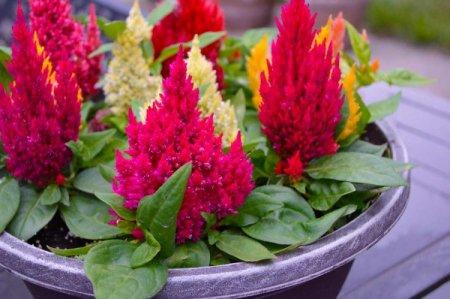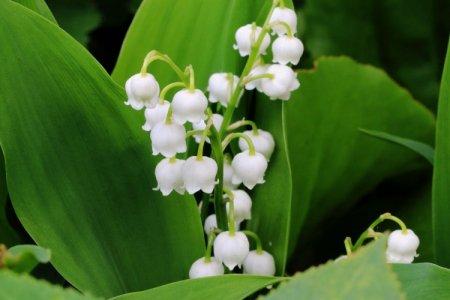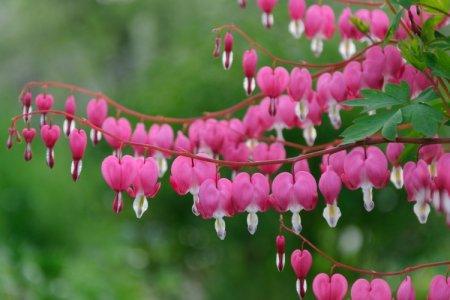
The charming African Nemesia immediately attracts attention with its unusual beauty. Its funnel-shaped flowers are interesting with bright colors and will become a real decoration of any garden. Even the name of the plant is special - in honor of the goddess of retribution, Nemesis. Let's tell you more!
general information
Nemesia is a very beautiful and branched flowering plant, most often herbaceous or semi-shrub. It has strong, erect and partially pubescent shoots and fragrant flowers up to 3 cm in diameter. The buds are single or collected in paniculate inflorescences.
The height of the bushes on average varies from 30 to 60 cm. Sometimes, due to too large and heavy inflorescences, the stems bend over time. The serrated leaves are decorative in their own right.
Nemesia attracts with a variety of shades, but most often it is a warm color scheme. Two-tone varieties are very good. If you provide the plant with good conditions, it blooms so profusely that the green part is almost invisible behind the bright petals.

Types of nemesia
The genus of Nemesia includes about 50 varieties, but only the brightest and most lush-flowering of them are used in ornamental gardening.
Goiter nemesia
It is a small annual plant up to 40 cm in height, but at the same time - with a dense spreading crown. The leaves are elongated linear, and the diameter of the colorful flowers reaches 2.5 cm. The colors are very diverse - from red to blue.

Multicolored nemesia
Branched, but erect bushes are very compact - up to 25 cm. The flowers of this nemesia are distinguished by a regular symmetrical shape and a paler center.

Azure nemesia
This is an excellent ampelous plant with flexible herbaceous shoots about 40 cm in length. In June, azure nemesia is densely covered with large blue, pink or white inflorescences.

Lush nemesia
This group includes varieties with abundant flowering. At the same time, the buds are rather small, whitish or blue, but there are a lot of them. Floribunda nemesia is only gaining popularity in Russia.

Hybrid nemesia
A traditional separate category for breeding varieties of all kinds of colors and shapes. Hybrid nemesia has beautiful bright green leaves and large asymmetrical flowers up to 2 cm in diameter.

Nemesia care
When growing nemesia as an annual, there are no problems at all with leaving. The natural conditions of our latitudes are quite suitable for it.
Temperature
During active growth, the ideal temperature is a stable +18 degrees. When wintering indoors, it is recommended to lower it to +12. In the open field, nemesia is grown only as an annual.

Lighting
Nemesia is not afraid of direct sunlight and needs bright lighting throughout the day. Some varieties can grow in light shade, but even they will not bloom in full shade.

Watering
Nemesia should be watered regularly, but so that the topsoil has time to dry out. It is advisable to use warm soft water. Do not plant nemesia in flooded areas or with a close occurrence of groundwater.

The soil
The soil for nemesia must first of all be well drained. Everything should be moderate - moisture, fertility, acidity. Only soil with a high lime content will not work.

Fertilizers and feeding
Nemesia is fed only 2-3 times per season - no longer needed. Young shoots need nitrogen to build up green mass, and then, closer to flowering, potassium and phosphorus to form buds. You can fertilize nemesia with organic matter.

Planting and breeding
Seeds of nemesia are sown in containers with a good drainage layer by the end of March. You need a loose, but nutritious substrate and more space so as not to thicken the planting.Sprinkle the seeds on top with a thin layer of sand and cover with foil or glass. In about a week, at +20 degrees and in partial shade, the first shoots will appear.
When all the seeds have sprouted, remove the film and lower the temperature to +10 degrees. More light is also not needed yet - your task is to simulate natural conditions so that the bushes grow strong and lush. When 2-3 leaves appear on them, the seedlings can be pinched and planted in separate cups. Gradually start to raise the temperature.
Nemesia is transplanted into the garden when the frost has finally passed - somewhere by the end of May. The distance between the holes is 20-30 cm. We recommend using the transfer method so as not to damage the root system. Then mulch the area to preserve moisture and protect against weeds.
Before planting, the seedlings are gradually hardened for a couple of hours a day. In warm regions, you can plant seeds directly into the ground, but then it will bloom later. If suddenly unexpected cold weather nevertheless appeared, cover the flowers with a non-woven covering material.
To propagate nemesia by cuttings, bring it indoors in the fall and leave it to overwinter in the cool. In the spring, young shoots were separated and rooted in moist peat under a film. But by division, nemesia is not propagated due to the low efficiency of the procedure.

Diseases and pests of nemesia
With poor drainage and high humidity, root rot and black leg develop, and a heavily damaged plant will have to be destroyed. Nemesia also suffers from other fungal diseases. Use fungicides for treatment, and for prevention, do not thicken the planting and avoid too intense watering on cold days.
The most common pest of nemesia is the spider mite, which leaves a coating of thin white cobwebs on the leaves. Gradually, the plant turns yellow, cracks and withers. In the early stages, washing with soapy water helps, but if there are a lot of insects, use chemicals right away.

Nemesia - photo
Nemesia refers to those garden flowers that do not need advertising at all. After all, the best advertisement is its natural beauty!



























